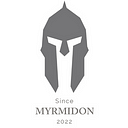An overview — Concordium Network
Introduction to Concordium Network
Concordium is a public-layer 1, science-backed blockchain, designed to balance privacy with accountability through its ID layer. The protocol level ID, ensures that every wallet is associated with a real-world identity that has been verified through a third party ID provider, so that people and companies can trust one another, while remaining private, with zero-knowledge-proof. With safe transactions, Concordium can unlock a global, multi-trillion-dollar economy, so bankers to regulators actually want to use blockchain. For DeFi degens, metaverse players, and gamers, they will all need to know who the other person is for blockchain to truly become global. It starts with trust, and with Concordium, this dream can actually become reality. Concordium believe that making ID credentials available to smart contracts, whilst preserving privacy, is key to the mass migration of web2 to web3 and beyond. Their native coin, CCD, is available for purchase on various exchanges, and is used for paying transaction fees, staking, rewards for node operators, and as a collateral/settlement medium for Concordium’s DeFi landscape. With leadership from Volvo, IKEA, Credit Suisse, and 52M EUR raised to date, the team are now scaling the chain to their extensive network of the world’s biggest enterprises.
Focus on regulatory compliance from base layer
The Concordium Network is designed to integrate with current financial and business systems that require knowledge of a user’s identity. Through the development of unique protocol-level identity primitives, Concordium helps application developers, individuals and businesses build products that comply with local regulations, while retaining the benefits of a privacy-focused, public and permissionless blockchain. By user they mean any entity that holds an account on the Concordium Platform. These can be individuals or legal entities, such as businesses, and they require a valid form of identification to facilitate the off-chain identification process. The innovative identity layer provides a compliance-centric balance between anonymity and accountability. This means, that a user’s identity is per default anonymous when interacting on the blockchain to the eco-system, however, this anonymity can be revealed and your real identity exposed in response to a valid request performed by any legal channel such as the government. This gives the users the opportunity of anonymity to the general public and Concordium the opportunity to revoke and reveal user identities to authorities in case of any such request.
The native token on Concordium — CCD
The native token of the Concordium Platform is called CCD (short for ConCorDium) and has the symbol Ͼ. It is the medium of incentivization that ensures network participants are rewarded for their efforts. CCD can be used for a variety of purposes, including earning rewards through staking, payment for the execution of smart contracts and payment via transactions between users. To perform any transactions on the Concordium Network, it is required to use CCD as the medium of exchange. Unlike Bitcoin, CCD has not revealed a fixed monetary policy that caps the total supply of CCD. As of October 2022, the token supply in circulation for CCD is ~4 billion. When it was first launched on the exchanges earlier this year, the price of CCD saw a sharp decrease which then gradually stabilized. Throughout its existence, CCD has traded at a relatively low price primarily because it is a new entry in the blockchain space and has not gained as much traction as other well-known projects. Ultimately, if Concordium delivers on its promises and persists through the the ongoing bear market, a high demand (hence a higher price) of the token is likely to occur in the future. So far, Concordium is the only blockchain that delivers ID identification on the base layer, which means you cannot interact with the blockchain without performing KYC.
Staking on Concordium Network
The Concordium Network uses a proof of stake (PoS) mechanism to ensure resource-efficient operation of the network along with enhanced security among participants. Users that hold CCD in their account can either stake some of their CCD and run their own node or delegate their CCD to a so-called delegation pool, like Pool ID 85192 operated by Myrmidon Staking, a third party non-custodial staking provider in the Concordium eco-system. Across the network, the more stake that participates, the harder it becomes for malicious parties to control a majority of the stake. The effective stake of a node equals the stake of that node plus the node’s part of the delegation pool. By Staking your CCD, you can as an investor earn rewards by locking your CCD as a form of insurance for a set period of time and then participate in the eco-system. The APY is around 8–12% at the time of writing and it gives investors the opportunity to earn passive income on their investment. Please see our easy step-by-step guide on how to stake right here: https://myrmidonstaking.medium.com/concordium-how-to-stake-your-ccd-tokens-with-myrmidon-staking-8e983119d88b
Final thoughts
The purpose of this article was to give you a brief overview of the Concordium Network as a permissionless layer-1 blockchain with focus on regulatory compliance. We have also investigated its native token, CCD, how it is utilized and its function on the network.
Concordium is undoubtedly a promising and important project for this industry, as it aims to fill some of the gaps we have seen over the years regarding compliance, anonymity and scaling. The project is still in its very infancy and has a long way to go and it will be interesting to see if the path they have chosen regarding regulatory compliance from base layer will solve some of the long-standing challenges that this industry faces in order to reach greater adoption.
